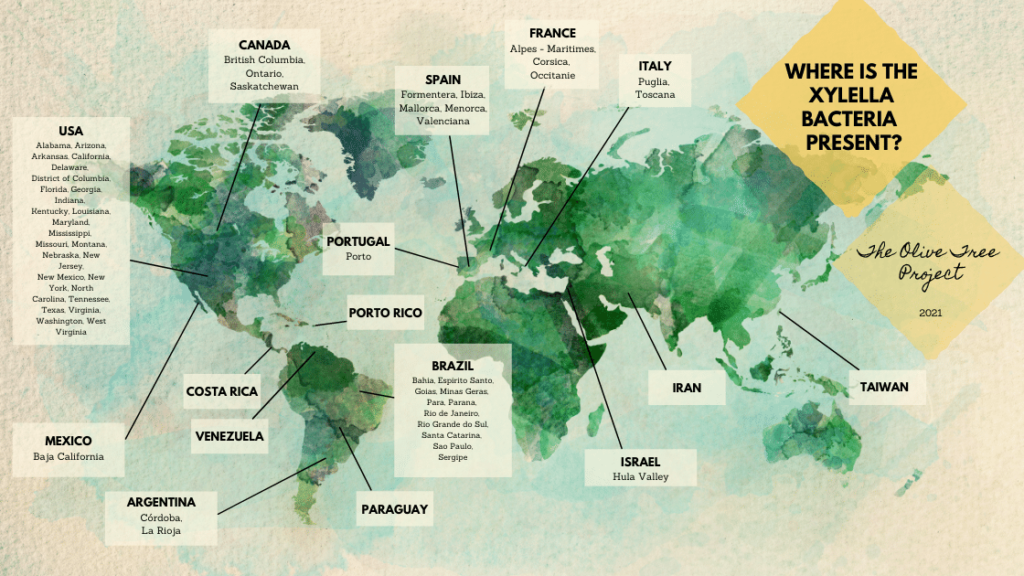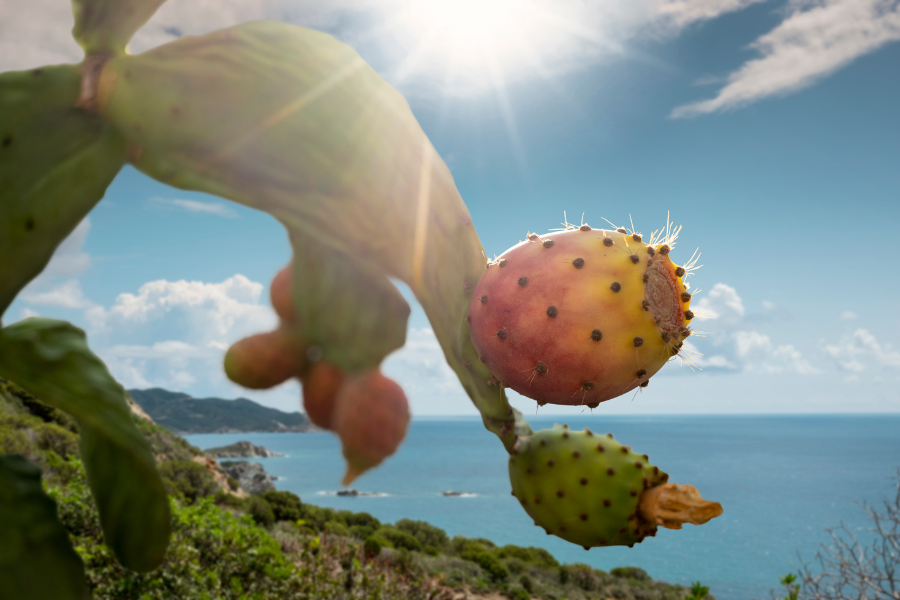The Xylella Fastidiosa Bacteria is believed to have originated in the Americas, where it was discovered by Newton B. Pierce in the late 19th century. Pierce, the first professional plant pathologist in California found the disease affecting grapevines in Anaheim, CA. It was called Pierce’s Disease, a strain of Xylella Fastidiosa that affects grape plants. Today the Xylella Fastidiosa Bacteria’s presence has been confirmed in 16 countries worldwide. In addition, there have been invalidated reports in four other countries of its presence. In the United States, the bacteria has been verified in 30 states.
The first signs of the Xylella pathogen in Asia were found in 1990 in Taiwan on the Asian pear tree. In Europe, it was first discovered in Puglia Italy in 2013 in olive trees. Since then it has spread to six other European countries.
In Germany, the bacteria was detected in 2016 in Oleander plants and was eradicated by 2018. In Switzerland the bacteria was discovered in coffee plants in 2015 and was also eradicated by 2018. Today the Xylella bacteria is absent in both Germany and Switzerland.
As the pathogen is present in some parts of Southern Europe, there is high risk for it to continue to spread to the rest of the Mediterranean basin, including Middle Eastern and North African countries. “This dangerous non-native pathogen causes several devastating plant diseases that have huge socio-economic and ecological impacts.” [1]
Where the Xylella Fastidiosa is Currently Present

To find out more about Xylella Fastidiosa in Puglia, click here.
If you’d like to get up to date news about the situation, subscribe to our newsletter.
European and Mediterranean Plant Protection Organization Global Database






